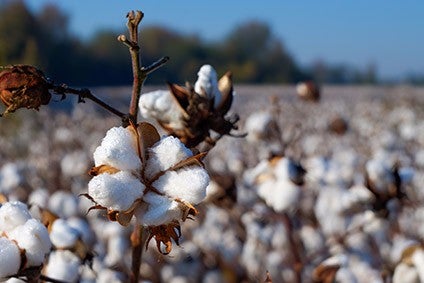
Product authentication business Applied DNA Sciences (APDN) is to introduce a new beta programme for the month of February in a bid to help brands and retailers identify the country of origin in cases of cotton fibre substitution.
The GeoTyping Beta Program uses a known library of biomarkers that designate the DNA fingerprint of the cotton cultivar, including genus, species and one of 70 different geographic-cultivar-dependent genotypes. As part of the programme, Applied DNA, which identified two biomarkers for Uzbekistan cotton in 2017, is asking those interested to provide cotton samples suspected to contain cotton from Uzbekistan.
The beta is an expansion of Applied DNA’s end-to-end SigNature T cotton traceability system, which enables the identification of the country of origin for cottons that may be substituted for the cotton specified on labels. For example, ‘Grown in America’ cotton might be substituted by an inferior quality of cotton sourced off-shore. This technology ensures the country-of-origin is properly identified on labels, and can help to prevent the entry of cotton cultivated by human rights abusers.
“Our SigNature T cotton traceability system provides substantial advantages over current supply chain management authentication, such as RFID, data dots or ‘certificates of authenticity’,” explains Dr James Hayward, president and CEO of Applied DNA. “Today, uncertainty of cotton supply chains remains if there is no way to physically trace the fibres to their source, and verify through DNA testing at yarn, fabric and finished goods. You cannot put an RFID on every single fibre and expect it to remain on the finished good. SigNature T combined with the GeoTyping Beta Program, provides full traceability that is seamless, economical and exact.”
According to APDN, recent reports have scrutinised hidden human rights abuses in global cotton supply chains including one in November of last year on prime time French television by the CASH Investigative Team, which reported Uzbek cotton was handpicked by forced labour organised on a large scale – “approximately 1m people” – by the Uzbek government. APDN said a “significant amount” of this cotton was shipped (some with missing or misleading statements of origin), to Bangladesh manufacturers that supply products to many US, UK and EU brands. The report also showed that suppliers who manufacture in South Korea, China and Europe also received Uzbek cotton.
Meanwhile, posing as a European importer, the CASH team also captured a conversation on hidden camera in which an Uzbek cotton product manufacturer offered to designate the country of origin (as opposed to Uzbekistan) that the buyer would prefer be stated on the origination documents, APDN said. The Uzbek exporter stated this was a very common measure undertaken for companies purchasing Uzbek cotton products, and that the risk of being caught falsely stating that the product was manufactured in Bulgaria, for example, was almost non-existent.

US Tariffs are shifting - will you react or anticipate?
Don’t let policy changes catch you off guard. Stay proactive with real-time data and expert analysis.
By GlobalDataMany of the potentially affected brands had publicly pledged to boycott Uzbek cotton in compliance with government laws, or were participating in global cotton initiatives that promulgate sustainability credits and ethical purchasing standards. Nonetheless, these brands were wittingly or unwittingly using manufacturers in their supply chain who were buying Uzbek cotton, providing the opportunity for cotton obtained via human rights abuse to enter their supply chains, APDN explains.
“Our high-resolution cotton GeoTyping assays can provide proof of the sourcing crimes and human rights abuses in the CASH Investigation expose.” Hayward adds. “GeoTyping complements SigNature T tagging. Should non-compliance be suspected in a SigNature T-participating textile, GeoTyping serves as the means to identify the source of cotton fibre substitution.”
GeoTyping is meant to complement, not replace, SigNature T tagging. The cost of this assay is comparatively higher due to the equipment, reagents, and maintenance associated with maintaining the extensive and annually-changing library of genomes against which single samples must be compared. SigNature T tagging provides a method to trace any fibre tested in a dedicated supply chain back to the intended original source; it can also be assigned meaning such as year, gin, or other attribute not possible from cotton’s inherent DNA. Should non-compliance be suspected in SigNature T-participating textiles, GeoTyping can serve as the means to identify the source of cotton fibre substitution.




